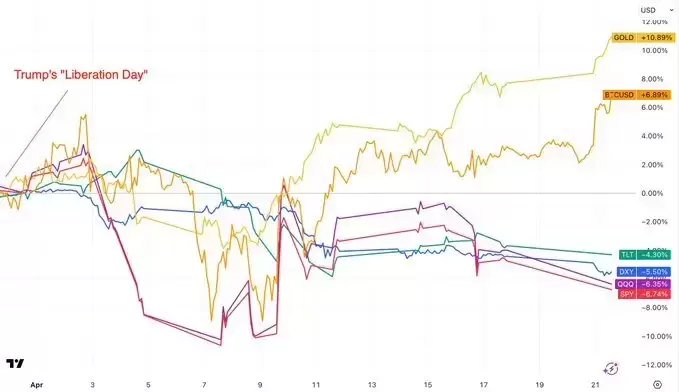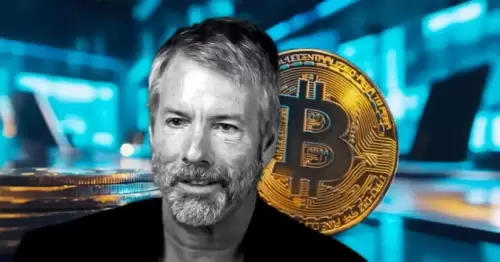 |
|
 |
|
 |
|
 |
|
 |
|
 |
|
 |
|
 |
|
 |
|
 |
|
 |
|
 |
|
 |
|
 |
|
 |
|
암호화폐 뉴스 기사
Can Late Capitalism Innovate Away from Environmentally Harmful Extraction and Meet Its Profit Demands While Meeting Global Net-Zero Goals.
2025/04/28 06:12

Can late capitalism innovate from environmentally harmful extraction and meet its profit demands while meeting global net-zero goals.
Or will it be necessary to adopt regimes of ecosocialism that enforce degrowth policies that minimize market-based development policies that can accelerate innovative processes and technology.
Trump thinks bitcoin is like clean coal, but like the Glomar Explorer affair that nearly recovered a complete soviet submarine, there’s far more below the ocean surface.
Digital data mining and the associated bitcoin dredging do not resemble actual resource extraction, but their environmental effects may ultimately contribute to a climate crisis that is already trying to move the net-zero timelines past 2030 and the temperature threshold from 2o to 3o C.
Map and territory converge as the need for ecosocialist policy planning for carbon remediation where an endless cycle of carbon sequestration does not promise the kind of speed necessary to prevent a climate crisis.
Cryptocurrency mining requires excessive amounts of electricity in creating currency that produces a variant of fictitious capital less dependent on location whereas marine mining is more capital-intensive than terrestrial mining. Firms with ocean oil drilling platforms see seafloor mining as a complementary source of commodities. The advantage is that land as seafloor has fewer rights issues.
Strip-mining the sea floor is a logical capitalist goal with open-ended assumptions of exploration rights. However, like Project Azarian’s cover story of mining for manganese nodules, there will be actual planet warming consequences at an ever-increasing scale.
Ultimately it is about financing such projects and the necessity of state power for implementing what is becoming more urgent degrowth applications. It’s still all about capital, even if mining digital ‘coinage’ is a diametric opposite of the extraction of rare earth metals.
The leading company in cryptocurrency mining now boasts a market capitalization exceeding $5 billion, surpassing that of many companies in the traditional materials mining sector.
Developing more information about cryptocurrency mining in the United States and its effects on electricity demand is important to provide context for energy policymakers, energy planners, and the general public. However, assessing the electricity use of cryptocurrency miners is difficult for several reasons. First, cryptocurrency mining can be performed with facilities of many sizes, ranging from individual workstations to massive data centers, which makes identifying them among the millions of end-use customers in the United States difficult. Second, identifying and tracking cryptocurrency mining facilities is made more difficult by the propensity of these operations to move in search of lower cost electricity. Third, when a cryptocurrency mining operation is identified, information on its power draw and operations is often unavailable or unclearly specified. Varied facility sizes, a paucity of data on operations, and shifts in facility location and ownership add complexity to the creation of a statistically representative sample of cryptocurrency miners.
www.eia.gov/…
Technological innovation, paid or unpaid, should be prized above any valorizing processes even if the recovery and recycling industry might not be sufficient to meet ecological goals. Ultimately, corruption will prevail if the current political situation continues.
While humans are capable of decimating ecosystems, we’re equally capable of safeguarding them by implementing restorative and protective measures. But there is another option, too: innovating away from environmentally harmful extraction. One alternative to deep-sea mining might be urban mining—recovering and recycling minerals from our built environment. Innovation isn’t just technology, after all. Sometimes, it’s the creativity to reimagine how things get done.
Even in more accessible marine environments, scientists have struggled to understand how ecosystems function. In parts of the once-bountiful Oslofjord, more than 80 percent of the cod are gone, thanks to overfishing and modern pollutants. Marine experts long thought ocean fish would repopulate the fjord, but recent research suggests uniquely adapted fjord fish are effectively irreplaceable. Other species have fared worse. Today, much of the Oslofjord remains nearly lifeless.
Farther north, fishers along Norway’s coasts noticed unusually large sea urchin populations starting in 1970. The grazing echinoderms devoured kelp forests, and other marine life disappeared with the kelp habitat. Only recently have researchers learned the cause: as technology increased catches and fishers targeted more species, the urchins lost their natural predators. The kelp is slowly growing back today.
One reason for these past collapses was a pervasive belief that fish were so abundant they couldn’t be exterminated—and therefore fishing didn’t need to be regulated. Ocean science, tracing causes of collapse and possible paths to restoration, was key to recovery. Herring made a comeback in under two decades through a fishing moratorium. Urchin harvesting might return kelp forests to the country’s north and central coasts. Even the decimated Oslofjord may stand a chance, with new fisheries management.
The relatively fast recovery of life in shallower seas has been a saving grace. But the consequences of deep-sea mining could
부인 성명:info@kdj.com
제공된 정보는 거래 조언이 아닙니다. kdj.com은 이 기사에 제공된 정보를 기반으로 이루어진 투자에 대해 어떠한 책임도 지지 않습니다. 암호화폐는 변동성이 매우 높으므로 철저한 조사 후 신중하게 투자하는 것이 좋습니다!
본 웹사이트에 사용된 내용이 귀하의 저작권을 침해한다고 판단되는 경우, 즉시 당사(info@kdj.com)로 연락주시면 즉시 삭제하도록 하겠습니다.





























































